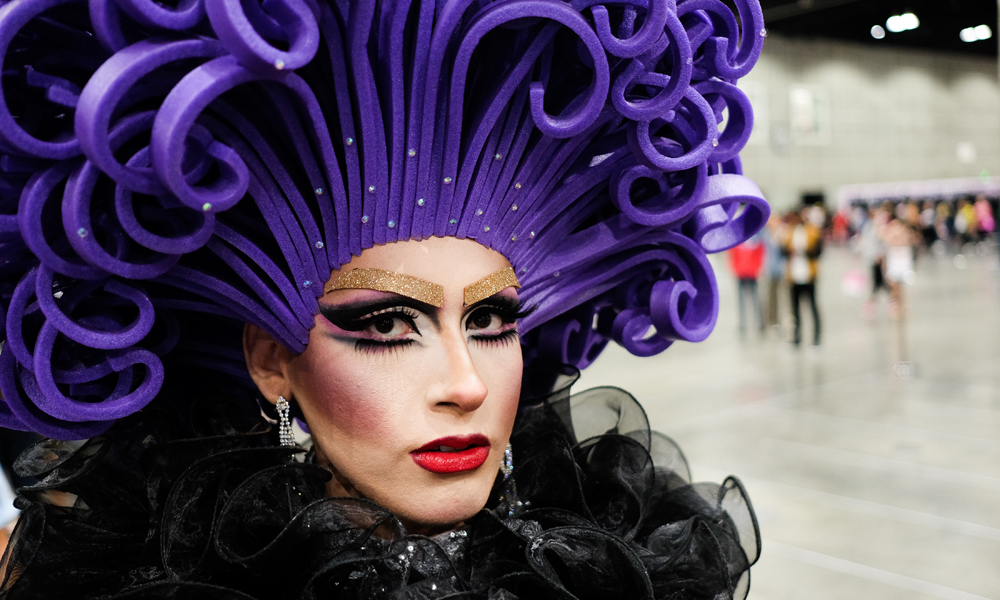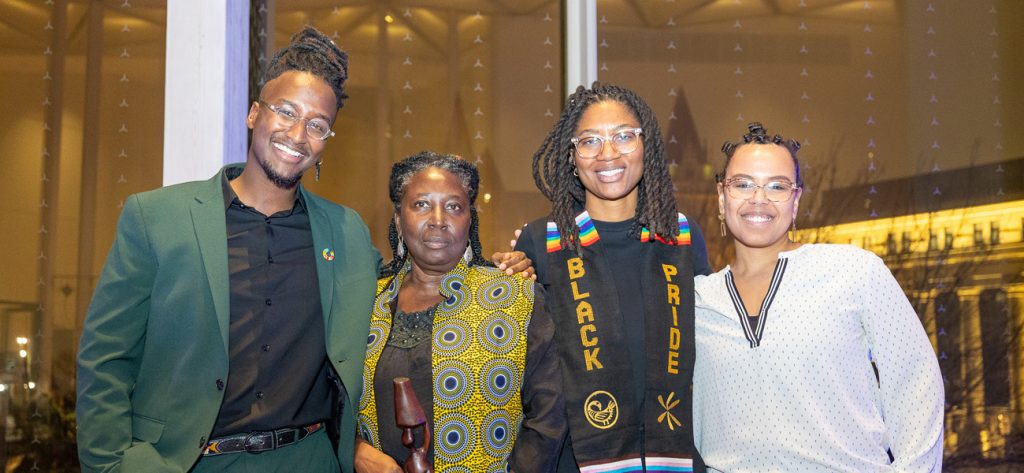…Because the issue is likely to flare up again and again
By Adam Zivo
Earlier this year, conservative commentators erupted in a new moral panic over whether drag queens are corrupting children. A torrent of articles and declarations washed over the news, decrying what, in some people’s minds, constituted a wave of “child grooming.” The issue was blown completely out of proportion.
The outcry over drag performers ignited when a video surfaced of an event called “Drag Your Kids to Pride.” The event, which was held in Dallas on June 4, featured drag queens – whose outfits and dance moves were often sexualized – performing to an audience that included many children.
The video sparked outrage – because, some felt that this particular performance was not appropriate for children and its existence was a bad look for the LGBTQ+ community.
Unfortunately, the video seemed to validate for some the narrative that the LGBTQ+ community is trying to “groom” children. This narrative, which was a staple of homophobia from generations past, has seen a meteoric resurgence among conservatives in the past year, abetted in no small part by influential social media accounts such as “Libs of TikTok.”
Pre-existing concerns about child grooming created the kindling for a moral panic – which the Dallas video duly set aflame. Conservative lawmakers quickly noticed. Texas legislator Brian Slaton declared that he would introduce legislation banning minors from attending drag performances. Florida Governor Ron DeSantis mused whether child protective services should investigate parents who take their children to see drag shows.
This outrage then bled over into Canada, where several libraries were met with threats of violence for hosting drag queen storytimes – daytime family-friendly events where drag queens read books to children, typically on such topics as inclusion and anti-bullying.
Drag queen storytimes have always attracted some controversy. For example, Toronto’s Fay Slift, who was a pioneer of the format and now hosts her own children’s show, “The Fabulous Show with Fay & Fluffy,” has long been subject to online harassment campaigns, including death threats.
Until this summer, these controversies were relatively minor and quarantined within niche groups. However, in the wake of the new moral panic over drag queens, over half a dozen libraries across Canada were inundated online and over the phone with slurs and occasional threats of violence. The problem became serious enough that pro-LGBTQ volunteers showed up at some events to protect participants.
Dorval, a suburb of Montreal, was flooded with complaints after one of its libraries announced that it would be hosting a drag queen storytime. “I’ve worked for the city for almost 20 years. I’ve never seen anything like this,” said Sébastien Gauthier, a spokesperson for the city.
The tsunami of revulsion and hatred was dizzying. I’ve worked extensively with Toronto’s drag community, having photographed and filmed some of Canada’s most recognizable drag queens. Like many LGBTQ people living in downtown Toronto, I know several drag queens personally. The people I’ve met in real life bear little resemblance to the bogeymen hallucinated in some conservative circles.
However, as a centre-right columnist at the National Post, a conservative newspaper, I also know many conservatives and am familiar with the conservative media ecosystem. Having an insider perspective into both of these worlds, I’d like to share some insights that can help disentangle this moral panic and, ideally, provide some constructive ways to dampen it.
The first thing for many LGBTQ+ people to remember is that the people who fear drag queens don’t have much experience interacting with them. They don’t know drag culture. As a result, they miss many of the nuances thatmembers of the LGBTQ+ community may take for granted.
For example, LGBTQ+ people generally understand that drag fuses many different forms of entertainment – standup comedy, dance, clowning, performance art and so on. Drag is a very flexible art form. It can look like a lot of different things. There are drag queens who dress and dance like strippers. There are also more wholesome drag queens who emulate clowns.
The kind of drag queens who read to kids at libraries are generally the latter kind – those emulating clowns, not strippers. They’re the kind of queens who are interested in using the silliness of drag to coax kids into loving reading. Fay Slift is emblematic of this kind of drag queen.
When conservatives get angry over drag queens, it’s usually because they are shown photos and videos of stripper-style drag queens – those with massive silicone breasts, thongs and so on. Lacking awareness of the broader context of drag, they assume that all drag looks like this.
To assuage these people’s anger, the LGBTQ+ community should call attention to the different kinds of drag that exist. Right now, we simply assert that drag queens are appropriate for kids without being specific about type – because we take it for granted that everyone knows queens at libraries aren’t going to dress like strippers.
It would be better for the LGBTQ+ community to clearly communicate that only some kinds of drag are child-appropriate and that only child-appropriate queens are supported. It would also be helpful to explain how child-appropriate drag queens can uniquely get children invested into reading and anti-bullying messages (this is crucial,as critics often wonder why exactly a drag queen needs to be in a library in the first place).
But there’s a complicating factor. Not all queens who read at libraries have wholesome, clown-like personas. Many edgy queens also read at libraries. When they do, they typically sanitize themselves and their performances accordingly – because that’s just common sense. Drag queens are people – they generally recognize that you shouldn’t wear the same outfit to a 1 am club performance as you would to a daytime children’s library event. They try their best to navigate different audiences in a respectful, but entertaining, way.
Is this kind of compartmentalization acceptable? Arguably yes – it’s already routinely done with entertainers of all stripes. Christina Aguilera and Snoop Dogg have both supported youth programming, despite being legendary for their raunch and violent lyrics, respectively. Rap group Migos has a hit song that references selling cocaine, but they still performed a youth-friendly show at the 2019 Nickelodeon Kids’ Choice Awards.
Holding drag queens to a different standard, and denying them the freedom to compartmentalize different parts of their career, is unfair and hypocritical. However, it’s hard to talk about this to conservatives, as prominent conservative voices often either miss, or intentionally ignore, this capacity for compartmentalization..
For example, US Congresswoman Marjorie Taylor Greene tweeted an image of a drag queen, Holly Hazmat, wearing nothing but a thong, and then insinuated that Hazmat had been dressed that way at a family-friendly Pride event in Chicago. “This should be illegal,” said Greene.
Hazmat responded, “This isn’t real. You have got to be joking me. This is not how I dress for all ages shows.” Images of the Chicago event showed Hazmat wearing a jacket and tutu, skin covered up – more like a clown, not a stripper. But by this point, Hazmat had already been inundated with death threats.
It’s tempting to simply dismiss people like Marjorie Taylor Greene as bad faith actors who are deliberately misrepresenting drag queens to demonize them. To do so would put the blame squarely at their feet and absolve ourselves of responsibility for the current situation, but the actual situation is more complicated.
There are definitely cringe-worthy outlier events where drag queens aren’t conscientious about child-appropriateness, such as the aforementioned Drag Your Kids to Pride incident. These outliers are typically heavily amplified in conservative media, creating the impression that they are the norm, rather than the exception. That then creates a perverse feedback loop of hysteria – cherry-picked incidents are blown out of proportion, which primes conservatives to assume the worst in drag queens (and therefore ignore things like compartmentalization), generating more incidents to be outraged over.
Ideally, this loop could be broken by getting conservatives to talk to drag queens who provide responsible children’s entertainment – so conservatives can see that queens are generally reasonable people with good intentions. But that kind of bridge-building seems impossible sometimes. That’s partially because many conservatives revile drag queens and so aren’t inclined to reach out to them, but also because drag queens are uninterested in using strategic communications to calm down conservative hysteria (which is understandable – it takes a lot of strength to reach out to people who are essentially calling you a pedophile).
In the absence of direct contact, the next-best option would be to explain these distinctions to conservatives – differences in drag styles, career compartmentalization and the importance of not generalizing from cherry-picked incidents.
However, these explanations work only if there is a sense of trust. Building trust means recognizing the existence (and inappropriateness) of outlier incidents where queens have exposed kids to sexual content. When this is not done, conservatives feel gaslit and think that LGBTQ+ people refuse to acknowledge, and even tacitly condone, drag queens being sexual in front of kids. Coming together and jointly condemning incidents of child-inappropriate drag at child-centred events would build trust and create opportunities for LGBTQ+ people to talk with conservatives about the meaning of these incidents – to parse out the good from the bad and show that, in most cases, drag queens are not something to worry about.
It would also help to call attention to the distinction between drag queens performing for children, and children performing drag. People often conflate these two distinct issues. The former isn’t a big deal, so long as queens keep their performances child-friendly, whereas the latter is arguably inappropriate in the same way that child beauty pageants are inappropriate. But those are separate issues – analogously, the weirdness of Toddlers and Tiaras shouldn’t preclude adult beauty pageant competitors from participating in child-friendly events. Explicitly addressing this is important, because it stops the backlash over child drag from bleeding over into other areas, and, at the same time, reinforces the idea that “drag” is a complex topic and shouldn’t be painted with a broad brush.
None of this communication work is easy, and some might argue that it’s unfair for these burdens to fall upon the LGBTQ+ community – why should we have to put in the work of calming down some conservatives who have whipped themselves up into a hysteria? But life is unfair. What matters in the end is what gets results. If this kind of communications approach dampens anger towards the LGBTQ+ community, which is already increasingly vulnerable amid an anti-queer backlash, then you simply run with it.
In the worst-case scenario, you can always shift the framing of the conversation to centre on conservative values – free speech and parents’ rights are good examples. You can argue that conservatives who believe that libraries shouldn’t deplatform speakers accused of transphobia should, in a similar spirit, argue against deplatforming drag queens. Free speech is not a principle you defend only when it’s convenient for you, after all.
Similarly, conservatives are often committed to a libertarian conception of parenthood, wherein parents are free to raise their children as they please with minimal government interference. If so, then conservatives should respect these rights for progressive parents, too. If you feel uncomfortable with drag queens, just keep your kids at home and refrain from infringing on other parents’ rights to determine what entertainment is appropriate for their own children.
These are, at least, some ideas from a gay conservative who peeks into different communities that don’t often talk to one another. With the summer having ended, the panic over drag queens appears to be subsiding, but it’s never too early to start preparing for next Pride season, when the issue will likely flare up again.
ADAM ZIVO is IN Magazine’s politics and culture columnist. He is a Toronto-based social entrepreneur, photographer and analyst best known for founding the LoveisLoveisLove campaign.







POST A COMMENT